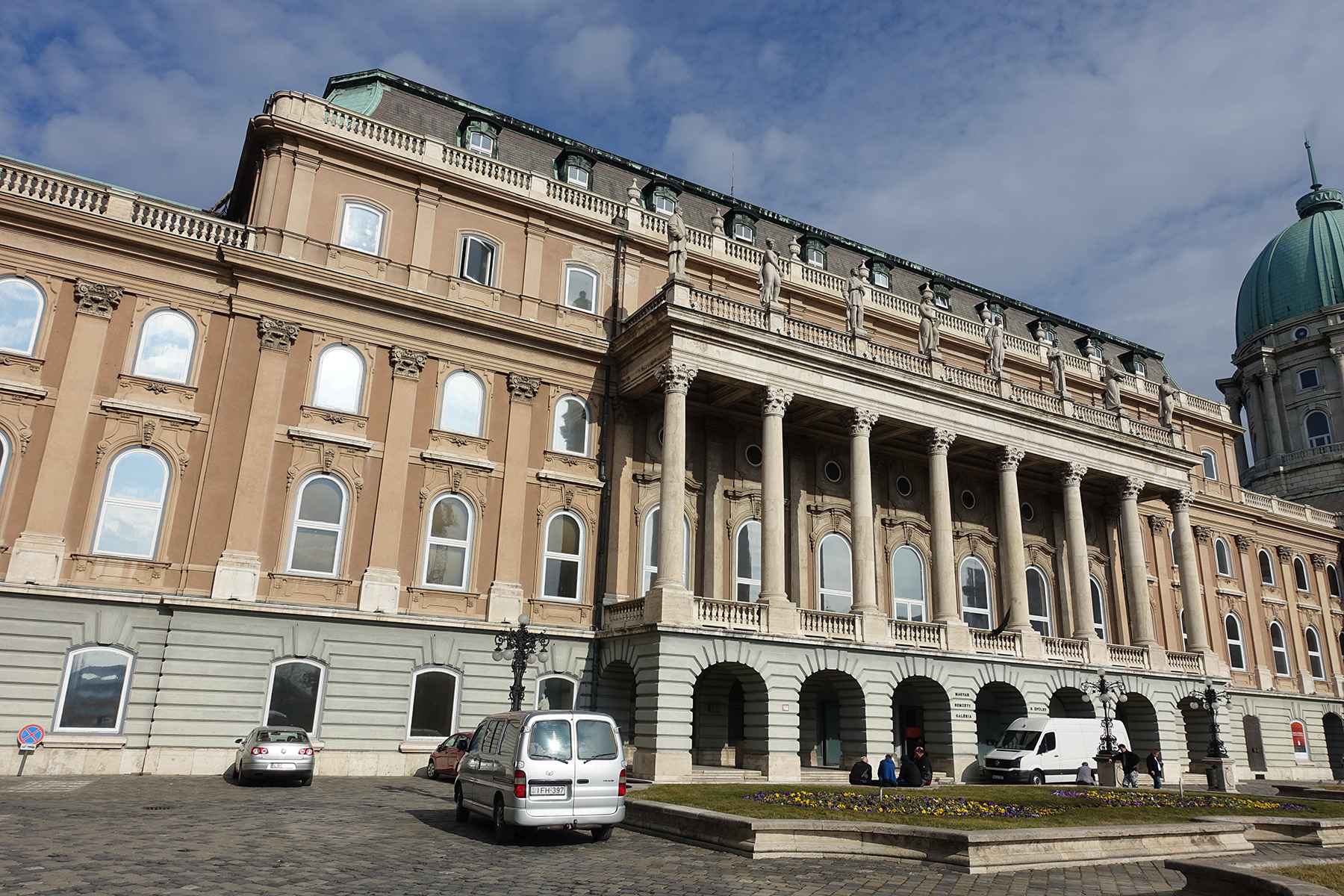The Contemporary Collection was established by the director of the Hungarian National Gallery (MNG) in 1974, at the time of the museum’s relocation to the Buda Castle, under the name Modern Hungarian Department, in response to the directives set by the 1972 audit of the competent ministry (the revision had overlooked mainly group exhibitions related to living art). At first the date 1974 was set as the lower timeline for collecting, but this was later shifted back to 1945 due to bequests to the collection (from Béla Kondor, Lili Országh, and Menyhért Tóth).
In accordance with the canon-forming role of the collection, its actual goal is to present a representative overview of the tendencies, styles, and works of outstanding artist personalities of Hungarian art. However, the concept was not always open to this degree. At the beginning, the scope of available works was restricted by the yearly acquisitions of the Art Fund. At the end of the seventies, the staff of MNG was also charged with the task of proposing works to acquire. Later on, these proposals were given increasing weight, so that professional opinions could prevail in the shaping of the collection.
This process strengthened during the eighties, when the regrouping of the resources from the Art Fund to the ministry took place, so that it became possible to purchase works from larger group exhibitions as well. At the peak of the process, the museum staff was also allowed to acquire works from artists’ studios due to a separate allocated fund. In retrospect the current staff of the collection considers this period of the second half of the eighties as the “golden age,” when on both sides, experts (at the ministry and at the museum) were negotiating without much political intervention.
From the nineties on, the acquisition fund of the ministry, later the acquisition competitions for public collections of the newly established National Cultural Fund, constituted the resources. After some time, the fund in the ministry ceased, but later a certain part of the budget of MNG became available for acquisitions, from which the Contemporary Collection could also draw from time to time. However during these years, the purchasing power of museums dropped significantly.
The process of acquisition has not been smooth in the recent years. The museum staff always applied for the competitions of the National Cultural Fund with more works than could be supported. It happens regularly that the decision board cuts back the planned sum allocated to a work, and there were cases when they simply expunged certain works from the list. The cut back funds often have to be complemented with the internal acquisition budget of the museum, whenever it is possible, or in many cases, the artist sells the work at a fraction of the price in light of the prestige of being represented in the collection.
Current collecting policies are based on two factors. One is trend research: the museum staff observes actual art trends and tries to acquire relevant works through the competitions of the National Cultural Fund (in the last years they managed to purchase a few works with the help of the internal budget as well). The other merit is collection complementation, back in time, from those artists whose work is considered decisive in a certain period, but due to some reason did not became part of the collection earlier. Currently they are focused on acquiring such pieces from the sixties and seventies. A third factor could be mentioned as well: career tracking. If there is an early work from an artist in the collection and her career seems to be promising, then they may develop the oeuvre with another purchase.
From time to time there were experts in the staff of MNG who had a different opinion than the official viewpoint, who were sympathetic to tendencies and art phenomena excluded from official publicity (therefore not collected by MNG either), and looked for ways to find publicity for these works. The Műhely (Workshop) exhibition series started in 1976 in terms of the slogan of the period, “public education,” presented new works of young artists, and thus progressive tendencies and unusual mediums (sound-color-space, holography, laser, fire paintings) could appear in the official program of MNG.
In terms of acquisition, the staff of the Contemporary Collection kept testing the tolerance of the leadership (in terms of what works in a given period could be introduced in the wish-list, and could still get authorized and retransmitted to the ministry by the directorate). For these reasons, the activities that can be classified as cultural resistance varied from period to period depending on the viewpoint of the MNG staff—whose work can be considered simply the advocacy of professional confidence within the given possibilities.
From the point of view of the museum staff interviewed for this project, the definition and locations of cultural resistance were a “shifting pattern” of mobile, odd events, occurring temporarily in different locations out of necessity. In their opinion it is hard to reveal when and how these threads are linked up with the activities, daily routine, and the research program of a professional team working in a public institution, because these links appeared only on an informal level: thus the picture could be established only with fine work, from interviews, letters, allusions. The institutional history revealed from official documents does not cover these incidents that took place on a different level.

